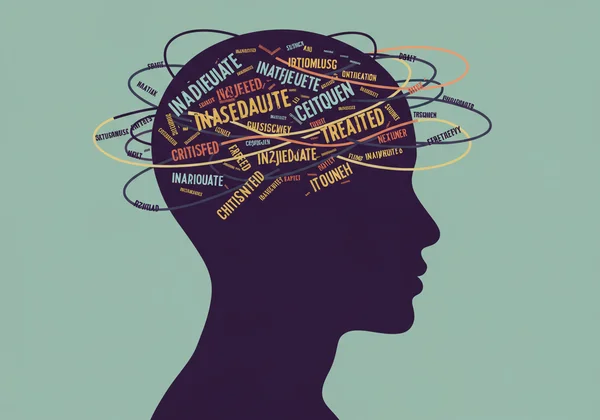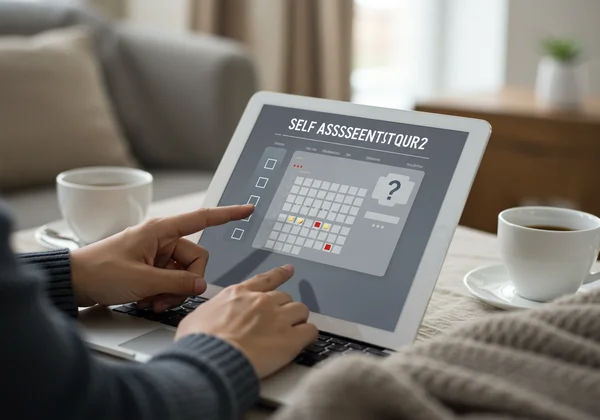Avoidant Personality Disorder (AVPD) Explained: Symptoms & Self-Test
Feeling misunderstood, isolated, or constantly afraid of judgment? You're not alone. Many grapple with intense social anxiety and avoidance, wondering if it's just shyness or something deeper. This guide aims to demystify Avoidant Personality Disorder (AVPD), offering clarity and understanding. Together, we'll explore its signs, causes, and pathways to support, empowering you on a journey of self-discovery. If these feelings resonate, your first step towards clarity is closer than you think. You can start your confidential AVPD self-assessment today with a free online tool.
Understanding Avoidant Personality Disorder (AVPD)
Avoidant Personality Disorder, or AVPD, is more than just feeling shy or awkward in social situations. It's a pervasive pattern of social inhibition, profound feelings of inadequacy, and an extreme sensitivity to negative evaluation or rejection. This pattern typically begins in early adulthood and manifests in various personal and social contexts, significantly impacting a person's life and relationships. For someone with AVPD, the fear of criticism is so overwhelming that they often choose loneliness over the risk of connection.

Understanding What is AVPD: Core Characteristics & Avoidant Personality Traits
At its core, AVPD is characterized by a deep-seated belief that one is socially inept, personally unappealing, or inferior to others. This isn't a fleeting thought but a persistent mindset that colors every interaction. Individuals with AVPD are often preoccupied with being criticized or rejected in social situations. Consequently, they avoid work activities that involve significant interpersonal contact, are unwilling to get involved with people unless certain of being liked, and show restraint within intimate relationships because of the fear of being shamed or ridiculed.
The Spectrum of Avoidance: From Shyness to Disorder
It's crucial to understand that shyness and AVPD exist on a spectrum of social avoidance. Many people are shy; they might feel uncomfortable in new social settings but eventually warm up. Social anxiety involves an intense fear of being judged in specific social or performance situations. AVPD, however, is a much broader and more ingrained personality disorder. It affects a person’s entire self-concept, leading them to avoid most, if not all, social connections and opportunities for fear of failure and rejection, even when they deeply crave intimacy and belonging.
Recognizing the Signs: Common AVPD Symptoms and Traits (Do I Have AVPD?)
Identifying the signs of AVPD is the first step toward understanding and seeking help. These symptoms are not just occasional feelings but are enduring patterns that cause significant distress and impairment in daily functioning. If you're wondering about your own patterns, a free online AVPD test can offer preliminary insights into these traits.
Emotional & Cognitive Manifestations of AVPD
The internal world of someone with AVPD is often filled with anxiety and self-doubt. Key emotional and cognitive signs include:
-
Constant worry about criticism or rejection: A preoccupation with what others think, assuming the worst.
-
Feelings of inadequacy: A core belief of being "not good enough" compared to others.
-
Low self-esteem: A chronically negative self-image that fuels the cycle of avoidance.
-
Hypersensitivity to negative feedback: Even mild criticism can feel like a devastating personal attack.
-
A strong desire for connection, but fear holds them back: This creates a painful internal conflict between loneliness and the fear of social engagement.

Behavioral Patterns: How Avoidance Plays Out in Daily Life
These internal feelings translate into distinct behavioral patterns. An individual with AVPD may:
- Avoid jobs or promotions that require significant social interaction.
- Steer clear of making new friends unless they are absolutely certain of being liked and accepted without criticism.
- Be extremely reserved and quiet in social gatherings, fearing they will say something wrong.
- Exaggerate potential difficulties or dangers in new situations to justify their avoidance.
- Refuse to take personal risks or try new activities because it might lead to embarrassment.
AVPD vs. Social Anxiety: Key Differences to Know
While they share a fear of social situations, AVPD and Social Anxiety Disorder (SAD) are different. SAD is typically fear related to specific situations, like public speaking or parties. A person with SAD may have healthy self-esteem outside of these trigger situations. In contrast, AVPD involves a pervasive feeling of inferiority that affects all areas of life. The avoidance in AVPD stems from a deeply negative self-concept, while in SAD, it's more about the fear of performance and judgment in specific contexts. Understanding this distinction can be a critical part of self-awareness.
Exploring the Roots: What Causes Avoidant Personality Disorder?
There is no single cause of AVPD. Like many mental health conditions, its development is believed to be a complex interplay of genetic predispositions and environmental factors, particularly those from early childhood. Gaining insight into these potential roots can foster self-compassion and a deeper understanding of the condition.
The Role of Genetics and Neurobiology
Research suggests that certain personality traits, such as anxiety and inhibition, can be inherited. If you have a family history of anxiety disorders or AVPD, your genetic makeup might make you more vulnerable. Neurobiologically, an overly sensitive temperament from birth could play a role, making a child more reactive to their environment and more prone to fearfulness and withdrawal.
Early Life Experiences and Environmental Factors
Childhood experiences are often considered a significant factor in the development of AVPD. A consistent pattern of parental or peer rejection, criticism, or ridicule can ingrain a deep sense of shame and inadequacy. Children who experience neglect, emotional abuse, or are made to feel like a burden may internalize these negative messages, leading them to believe they are unworthy of love and acceptance. This creates the foundation for the intense fear of rejection that defines AVPD in adulthood.

Diagnosis & The Path Forward: When to Seek Professional Help
Self-assessment is a valuable starting point, but a formal diagnosis of AVPD can only be made by a qualified mental health professional. Many individuals begin their journey with an online AVPD test to gain initial clarity. Understanding when and why to seek professional guidance is a crucial step on the path to healing and growth. An AVPD screening tool can help you organize your thoughts before speaking with a professional.
Understanding the DSM-5 Criteria for AVPD
Mental health professionals use the Diagnostic and Statistical Manual of Mental Disorders (DSM-5) to diagnose conditions like AVPD. According to the DSM-5, a diagnosis requires a pervasive pattern of social inhibition, feelings of inadequacy, and hypersensitivity to negative evaluation, as indicated by four or more specific criteria. These criteria formalize the symptoms discussed earlier, such as avoiding occupational activities, fearing intimacy, and viewing oneself as socially inept.
Beyond Self-Assessment: Why Professional Guidance Matters
While an avoidant personality quiz can provide valuable insights, it is not a substitute for a professional evaluation. A therapist or psychologist can conduct a comprehensive assessment, rule out other conditions with similar symptoms, and provide an accurate diagnosis. Most importantly, they can create a personalized treatment plan tailored to your unique needs, offering strategies and support that go far beyond what a simple test can provide.
Living & Thriving with AVPD: Management and Treatment Options
Receiving a diagnosis or identifying strongly with AVPD traits is not an endpoint; it's the beginning of a journey toward managing symptoms and building a more fulfilling life. With the right support and strategies, it is possible to challenge avoidance patterns and foster meaningful connections.
Common Therapeutic Approaches for AVPD
Therapy is the most effective treatment for AVPD. Several approaches have proven beneficial:
- Cognitive-Behavioral Therapy (CBT): Helps identify and challenge the negative thought patterns and core beliefs that fuel avoidance.
- Schema Therapy: Focuses on healing the deep-seated emotional wounds from childhood that contribute to AVPD.
- Group Therapy: Provides a safe, structured environment to practice social skills and challenge fears of rejection with others who have similar experiences.
Practical Strategies for Coping and Connection
Alongside therapy, individuals can work on practical strategies to manage AVPD in daily life. This includes gradually exposing oneself to feared social situations (starting small), practicing mindfulness to manage anxiety, and developing self-compassion to counteract the harsh inner critic. Building self-esteem through hobbies and skills can also create a stronger sense of self-worth independent of others' approval.
Start Your Journey: Free AVPD Test for Self-Discovery
Navigating social avoidance, fear of rejection, and feelings of inadequacy can be deeply isolating. But understanding that these patterns might point to a recognized condition like Avoidant Personality Disorder is a powerful first step – a step towards naming your struggle and finding a pathway to change. This knowledge can empower you, moving you from confusion to clarity, and from isolation towards the possibility of genuine connection.
Remember, this journey is entirely yours, at your own pace. If the traits described resonate with you, we invite you to take a gentle next step. Our free, confidential, and science-based AVPD test offers immediate, personalized insights. While it's an educational tool, not a diagnosis, it's designed to help you explore your personality traits in a safe, private space and guide you toward deeper self-understanding. Take the free AVPD quiz now and begin your path to self-discovery.

Frequently Asked Questions About Avoidant Personality Disorder
What are the primary symptoms of AVPD?
The primary symptoms include a deep-seated fear of criticism and rejection, intense feelings of inadequacy and inferiority, avoidance of social and occupational activities that involve interpersonal contact, and a reluctance to form relationships unless certain of being liked.
Is AVPD just extreme shyness, or is it different from social anxiety?
AVPD is more pervasive than extreme shyness and distinct from social anxiety. While shyness and social anxiety often relate to specific situations, AVPD involves a chronic, negative self-concept that affects nearly all areas of a person's life, leading to a broader pattern of avoidance.
How can you tell if someone might have avoidant personality disorder?
You might notice they consistently turn down social invitations, struggle to make friends, are extremely sensitive to any form of criticism, and express a very low opinion of themselves. They may seem lonely but simultaneously push away opportunities for connection out of fear.
What are the first steps if I think I might have AVPD?
The first step is self-education, just like reading this article. The next practical step can be taking a confidential self-assessment to better understand your traits. For a clearer picture, consider exploring the free AVPD test on our site as a starting point before seeking a professional opinion from a therapist or psychologist for a formal diagnosis and guidance.